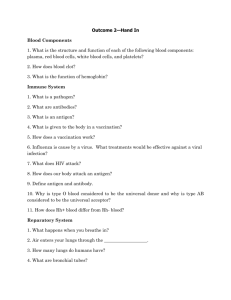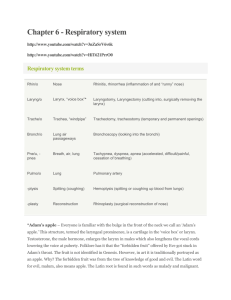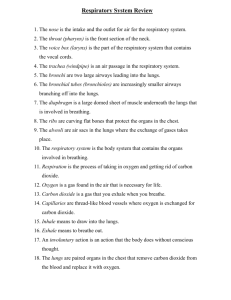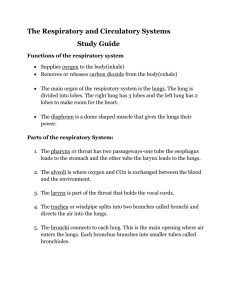Respiratory System: Facts, Function and Diseases
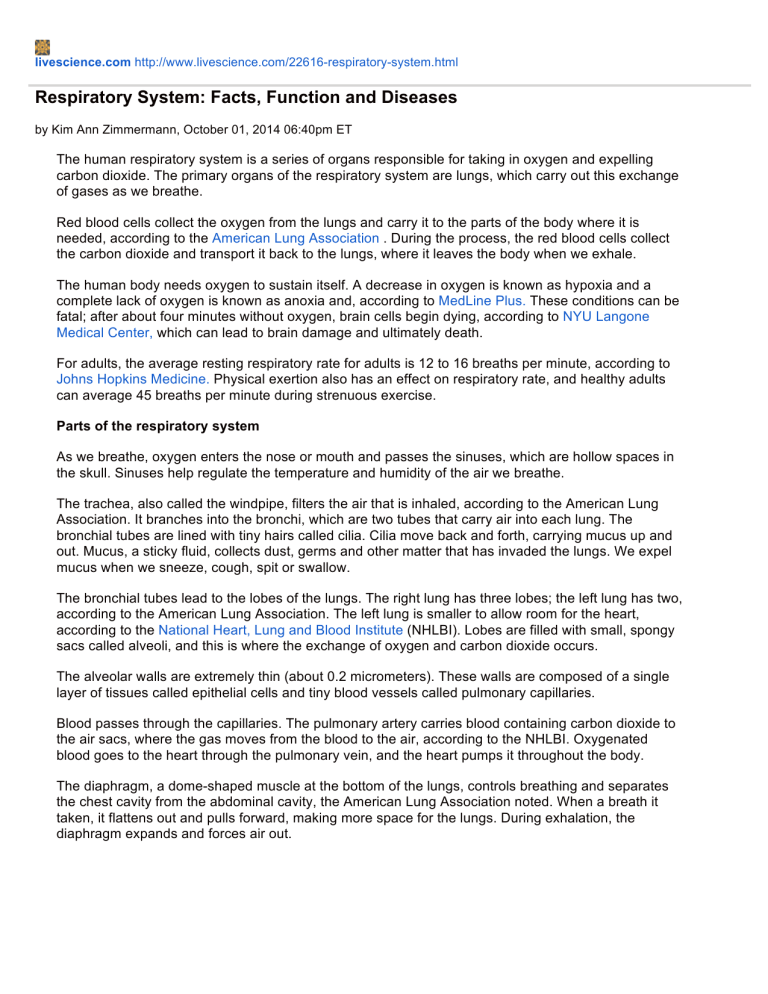
livescience.com http://www.livescience.com/22616-respiratory-system.html
Respiratory System: Facts, Function and Diseases
by Kim Ann Zimmermann, October 01, 2014 06:40pm ET
The human respiratory system is a series of organs responsible for taking in oxygen and expelling carbon dioxide. The primary organs of the respiratory system are lungs, which carry out this exchange of gases as we breathe.
Red blood cells collect the oxygen from the lungs and carry it to the parts of the body where it is needed, according to the American Lung Association . During the process, the red blood cells collect the carbon dioxide and transport it back to the lungs, where it leaves the body when we exhale.
The human body needs oxygen to sustain itself. A decrease in oxygen is known as hypoxia and a complete lack of oxygen is known as anoxia and, according to MedLine Plus. These conditions can be fatal; after about four minutes without oxygen, brain cells begin dying, according to NYU Langone
Medical Center, which can lead to brain damage and ultimately death.
For adults, the average resting respiratory rate for adults is 12 to 16 breaths per minute, according to
Johns Hopkins Medicine. Physical exertion also has an effect on respiratory rate, and healthy adults can average 45 breaths per minute during strenuous exercise.
Parts of the respiratory system
As we breathe, oxygen enters the nose or mouth and passes the sinuses, which are hollow spaces in the skull. Sinuses help regulate the temperature and humidity of the air we breathe.
The trachea, also called the windpipe, filters the air that is inhaled, according to the American Lung
Association. It branches into the bronchi, which are two tubes that carry air into each lung. The bronchial tubes are lined with tiny hairs called cilia. Cilia move back and forth, carrying mucus up and out. Mucus, a sticky fluid, collects dust, germs and other matter that has invaded the lungs. We expel mucus when we sneeze, cough, spit or swallow.
The bronchial tubes lead to the lobes of the lungs. The right lung has three lobes; the left lung has two, according to the American Lung Association. The left lung is smaller to allow room for the heart, according to the National Heart, Lung and Blood Institute (NHLBI). Lobes are filled with small, spongy sacs called alveoli, and this is where the exchange of oxygen and carbon dioxide occurs.
The alveolar walls are extremely thin (about 0.2 micrometers). These walls are composed of a single layer of tissues called epithelial cells and tiny blood vessels called pulmonary capillaries.
Blood passes through the capillaries. The pulmonary artery carries blood containing carbon dioxide to the air sacs, where the gas moves from the blood to the air, according to the NHLBI. Oxygenated blood goes to the heart through the pulmonary vein, and the heart pumps it throughout the body.
The diaphragm, a dome-shaped muscle at the bottom of the lungs, controls breathing and separates the chest cavity from the abdominal cavity, the American Lung Association noted. When a breath it taken, it flattens out and pulls forward, making more space for the lungs. During exhalation, the diaphragm expands and forces air out.


